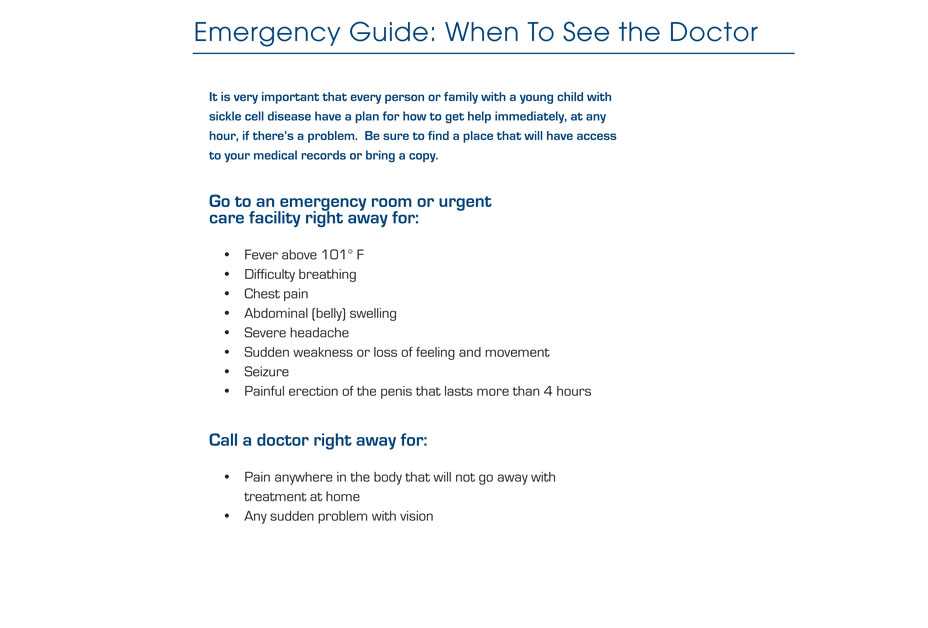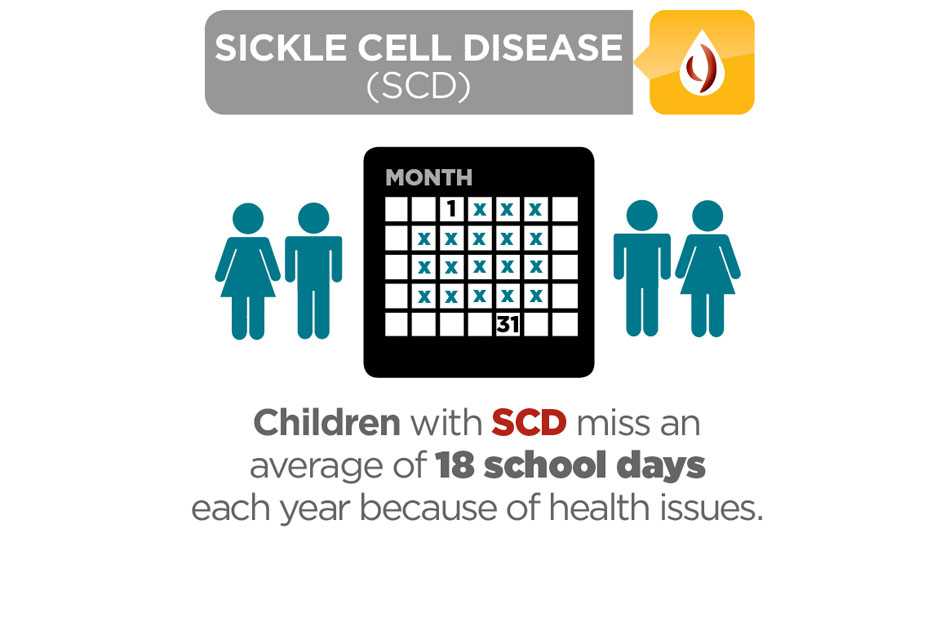Sickle Cell Disease

Sickle Cell Disease (SCD) is a group of inherited red blood cell disorders that is present from birth. Healthy red blood cells are round, and move easily through small blood vessels to carry oxygen throughout the body. However, in someone who has SCD, the red blood cells become hard and sticky, and have a C-shape, like a farmer’s sickle. The sickle cells die early, which causes a constant shortage of red blood cells (anemia). When sickle cells travel through small blood vessels, they get stuck and clog the blood flow. This can cause pain and other serious problems, such as infection, lung-related complications, and stroke.
Quiz
Key Facts
- Sickle cell disease affects 90,000 to 100,000 Americans.
- Pain is the most common complication of sickle cell disease and the top reason that people with SCD go to the hospital.
- Sickle cell disease can be treated, but not easily cured, so lifelong care to prevent or treat problems is critical.
Media
Prevention Tips
- Find Good Medical Care: Sickle cell disease is a complex disease. Good quality medical care from doctors and nurses who know a lot about the disease can help prevent some serious problems.
- Get Regular Checkups: Regular health checkups with a primary care doctor can help prevent some serious problems.
- Prevent Infections: Common illnesses can be dangerous for people with SCD. Stay healthy by taking simple preventive steps, such as proper handwashing, safely preparing foods, and getting vaccinations.
- Learn Healthy Habits: People with SCD should drink 8-10 glasses of water daily and eat healthy foods. Try not to get too hot or cold, and get enough rest. Children should exercise to stay healthy, drink plenty of water and rest when tired.
- Look for Clinical Studies: New clinical research studies are happening all the time to find better treatments and potential cures for sickle cell disease. Participants in these studies might have access to new medicines and treatment options.
- Get Support: Find a patient support group or community-based organization that can provide information, assistance, and support.
- Page last reviewed: May 23, 2017
- Page last updated: May 23, 2017
- Content source:


 ShareCompartir
ShareCompartir


